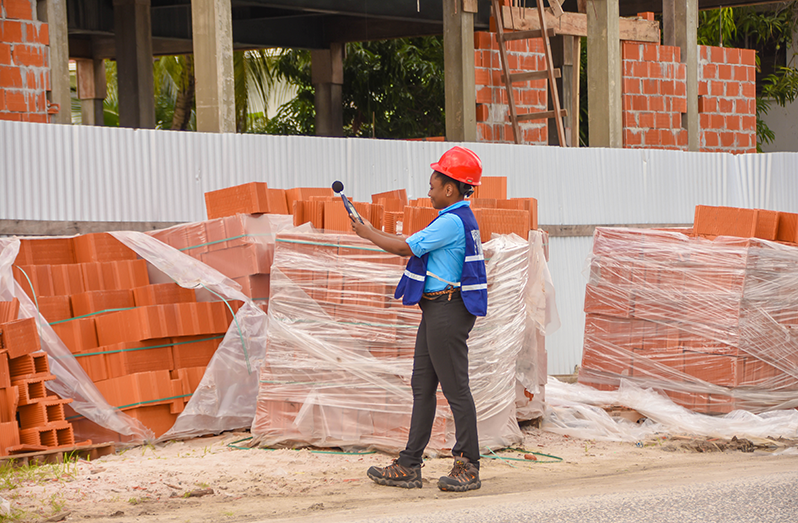WHENEVER you notice the staff of the Environmental Protection Agency (EPA) going into the field with their cameras, notepads, noise meters and other equipment, you might be wondering, why are they there?
Officers of the Agency are empowered by the Environmental Protection Act, Cap 20:05, Laws of Guyana and its Regulations to MONITOR how development projects are impacting the environment.
Compliance-monitoring is a critical part of environmental management. Once conducted properly, compliance-monitoring will lead to the early detection of environmental issues and non-compliance to prevent any long-term damage to the environment and human health. Additionally, monitoring ensures the effectiveness and efficiency of activities of businesses and development projects. This is so, since information is gathered which can be used to track changes occurring in the environment as a project progresses. Therefore, developers and persons responsible for the changes occurring are notified on time if something is going wrong and therefore, they will be able to address the issue, improving their quality of work.
Before any activity that is likely to have an impact on the environment commences, an authorisation from the EPA has to be issued in the form of an Environmental Permit. To have this, the agency must be provided with a description of the project, including the foreseen negative and positive impacts on the environment and mitigation measures to address the negative impacts.
Once a permit is issued, compliance-monitoring is scheduled by the EPA to ensure that these permit conditions are implemented, and, of course, to determine how effective and efficient they are. Some of the parameters that are monitored include air and water quality, noise levels, waste and land-management techniques. There are specific parameter limits that need to be followed to ensure that there is little negative environmental impact. The tests and observations conducted by the EPA in the field will reveal the level of compliance with these limits. To ensure that our natural resources are kept unharmed, the EPA conducts regular compliance visits.
 The authorisation given to conduct economic and developmental activities can be granted for various periods, with the maximum being five years, after which it would have to be renewed. However, before it is renewed, the EPA is required to carry out compliance-monitoring to ensure that the project site is in order. It should be noted that development projects will carry out self-monitoring yearly and submit an annual report of their findings to the agency.
The authorisation given to conduct economic and developmental activities can be granted for various periods, with the maximum being five years, after which it would have to be renewed. However, before it is renewed, the EPA is required to carry out compliance-monitoring to ensure that the project site is in order. It should be noted that development projects will carry out self-monitoring yearly and submit an annual report of their findings to the agency.
The importance of compliance-monitoring cannot be emphasised enough. Through this process, businesses and other development projects can benefit along with the environment and the people in the project area. The EPA ensures that compliance-monitoring is carried out for every activity in Guyana that can pose a threat to our environment and human health. Remember, that while the EPA is the main regulatory body for environmental management in Guyana, you also have a part to play by complying with the agency’s Act and Regulations and by your vigilance towards the environment.
Remember “The Environment Is Everybody’s Business”
You can share your ideas and questions by sending letters to: “Our Earth, Our Environment”, C/O ECEA Programme, Environmental Protection Agency, Ganges Street, Sophia, GEORGETOWN, or email us at: eit.epaguyana@gmail.com or follow us on Facebook and Instagram.




.png)









